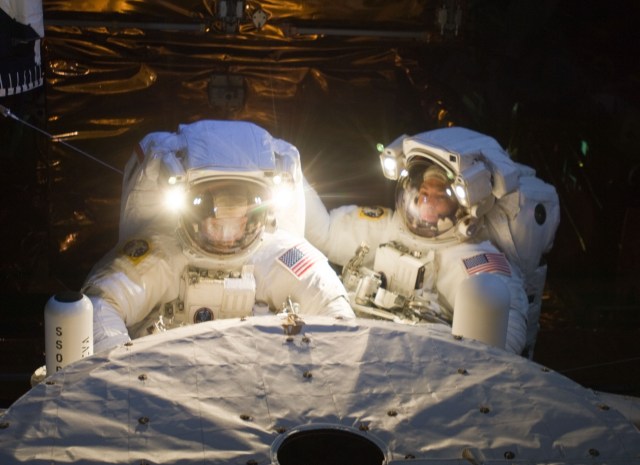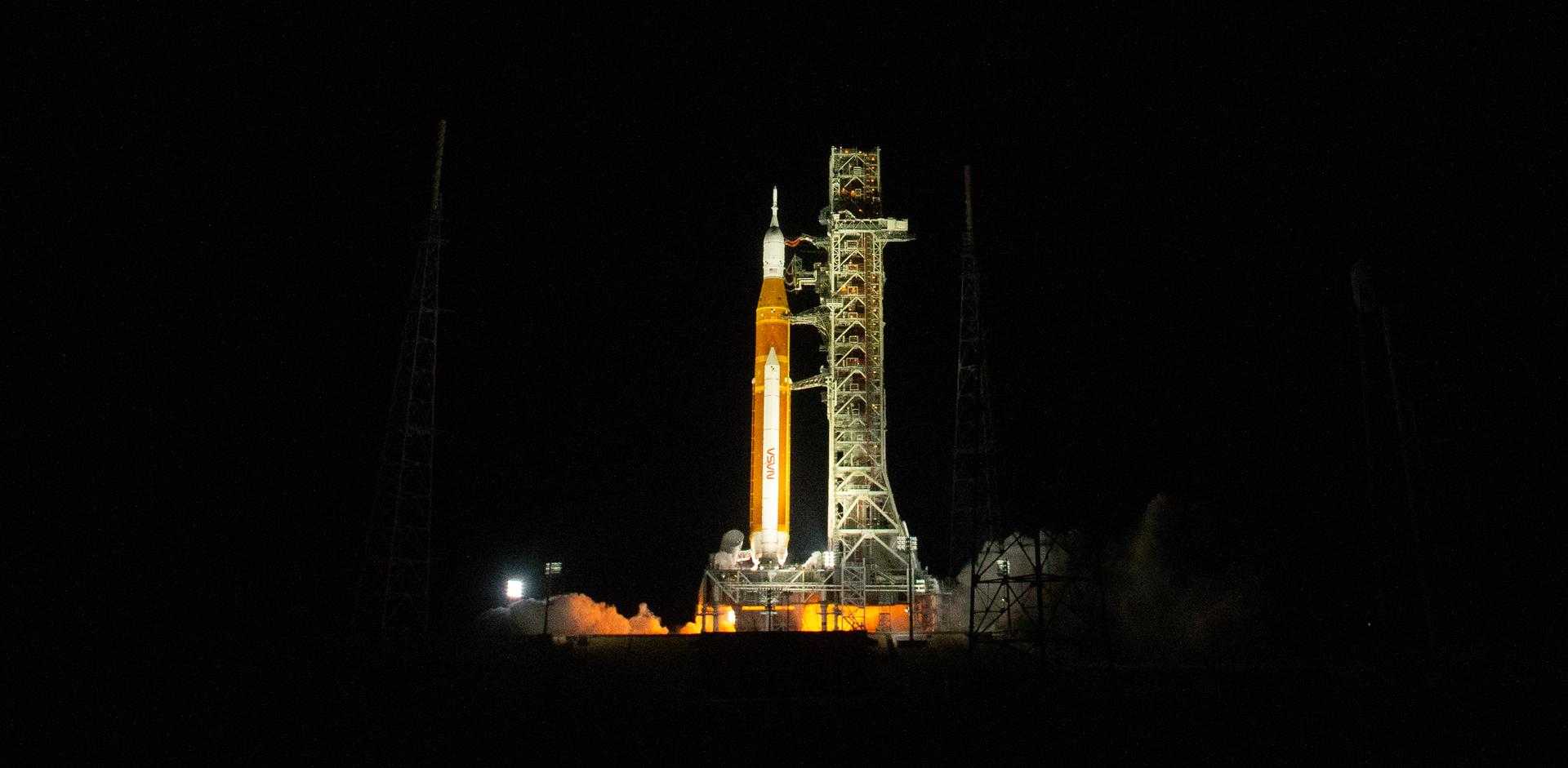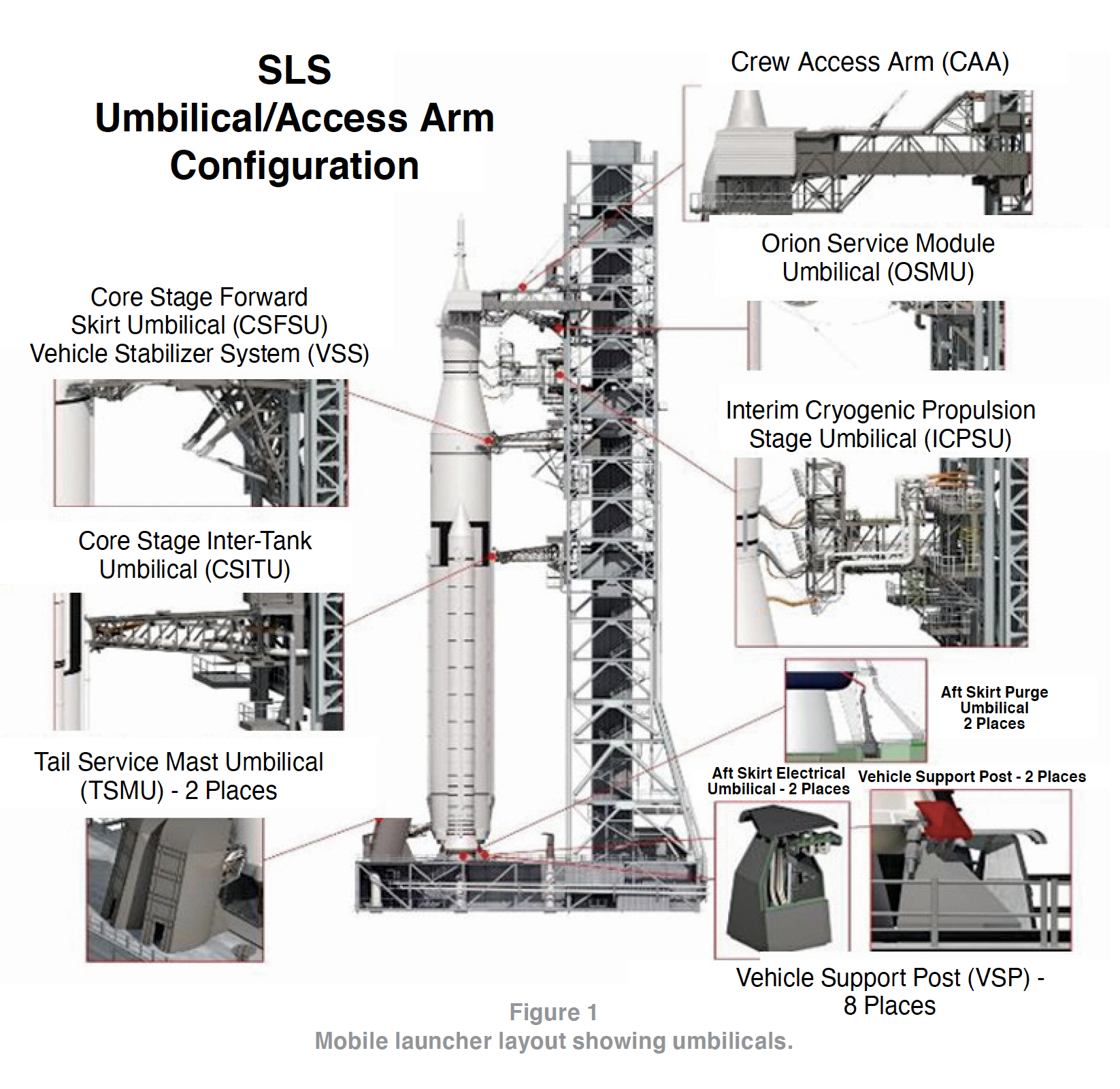Download PDF: Lift-off Modeling & Simulation of T-0 Umbilicals
The NESC has developed a fully nonlinear lift-off pad separation capability inclusive of umbilical separation dynamics for the Space Launch System (SLS) and the Exploration Ground Systems programs. This flexible multibody capability allows for characterization of umbilical separation at lift-off (i.e., T-0) and to perform relative clearance analyses when vehicle rise time is a critical parameter1. For the subject SLS lift-off transient coupled loads analysis (CLA), the separating interfaces, include Vehicle Support Posts to booster aft skirts, Vehicle Stabilizer System (VSS) to core stage (CS), and the CS umbilicals (Figure 1). This work provides a fully nonlinear, flexible multibody simulation for accurately capturing the loads from prelaunch stacking to umbilical and pad separation at lift-off. The prelaunch stacking and cryogenic shrinkage simulations lock-in the preloads and provide the initial conditions to the lift-off pad separation. It is the sudden transient release of these preloads, often referred to as the lift-off “twang,” that can result in high vehicle load indicator dynamic response. For the event of umbilical secondary disconnect, the multibody simulations solve for the umbilical force time-histories at the vehicle interfaces. These nonlinear interface forces are transient with significant peak amplitudes and quick decay rates. This combination can result in a pre-pad-separation twang in vehicle load indicators near umbilical separation locations. These phenomena manifest as a high frequency “buzz” in some load indicators to significantly altered response time-histories in others.
The SLS lift-off CLA is a nonlinear transient dynamic event. For the lift-off CLA to be valid, it must include the major system nonlinearities and their impact on dynamic response. This innovative technique includes Deformed Geometry Synthesis (DGS) for the replications of all physical stacking steps, cryogenic shrinkage, and associated geometric nonlinearities (e.g., aft strut rotations) for accurate preloads. The DGS algorithm locks in preloads due to geometry (e.g., stacking and cryogenic shrinkage) misalignments at component interfaces. This provides the preload contribution to the lift-off pad separation twang (i.e., includes the release of strain energy due to gravity effects). The nonlinear simulations utilize a flexible multibody framework with key benefits including the ability for the solver algorithms to handle nonlinearities at the substructure level without affecting the overall system computational performance. As such, the nonlinear lift-off transient CLA capability solves at fast computation speeds that are congruent with sensitivity and other risk reduction studies.
For vehicle-pad separation, simulations utilize an enhanced version of the Henkel-Mar (HM) pad separation nonlinear algorithm. The enhancement involves an iteration loop that discerns which separating interface takes precedence in the event when two or more interfaces separate at the same time. This results in a more realistic release of strain energy, resulting dynamics, and separation twang. A contact/recontact nonlinear algorithm tracks potential re-contact between all separating interfaces, e.g., booster aft skirt lateral rebound due to “squat” loads and extensible-post separation/recontact with the mobile launcher. The VSS model is a nonlinear substructure including the radial and tangential hydraulic struts with parameters defined from test data. A Newton-Raphson algorithm is utilized to solve for the VSS nonlinear behavior. The separation simulation of the VSS from the CS uses a timed-release algorithm. The Tail Service Mast Umbilical (TSMU) (liquid oxygen and liquid hydrogen), CS Intertank Umbilical (CSITU), and CS Forward Skirt Umbilical (CSFSU) secondary disconnects were included in the lift-off nonlinear simulations. Umbilical secondary disconnect scenarios for the two TSMUs, CSITU, and CSFSU utilize the HM algorithm inclusive of contact/recontact. This flexible multibody framework provides for exceptionally fast nonlinear simulation times and flexibility in adding components and nonlinearities without having to reformulate the entire system.
For more information, contact Joel Sills, joel.w.sills@nasa.gov.
1. Anshicks, R. D. (1970), Interactions with Launch Stand and Umbilicals, NASA-SP-0861, LaRC.





























